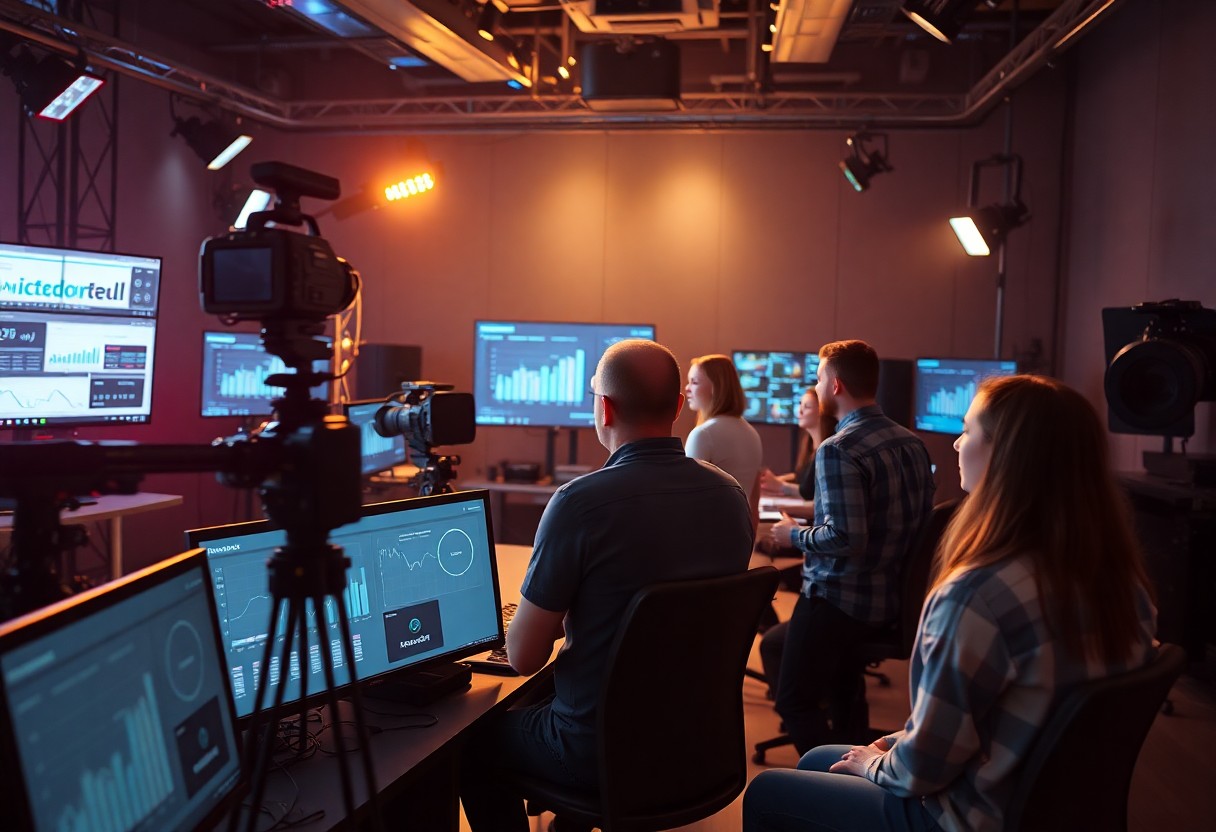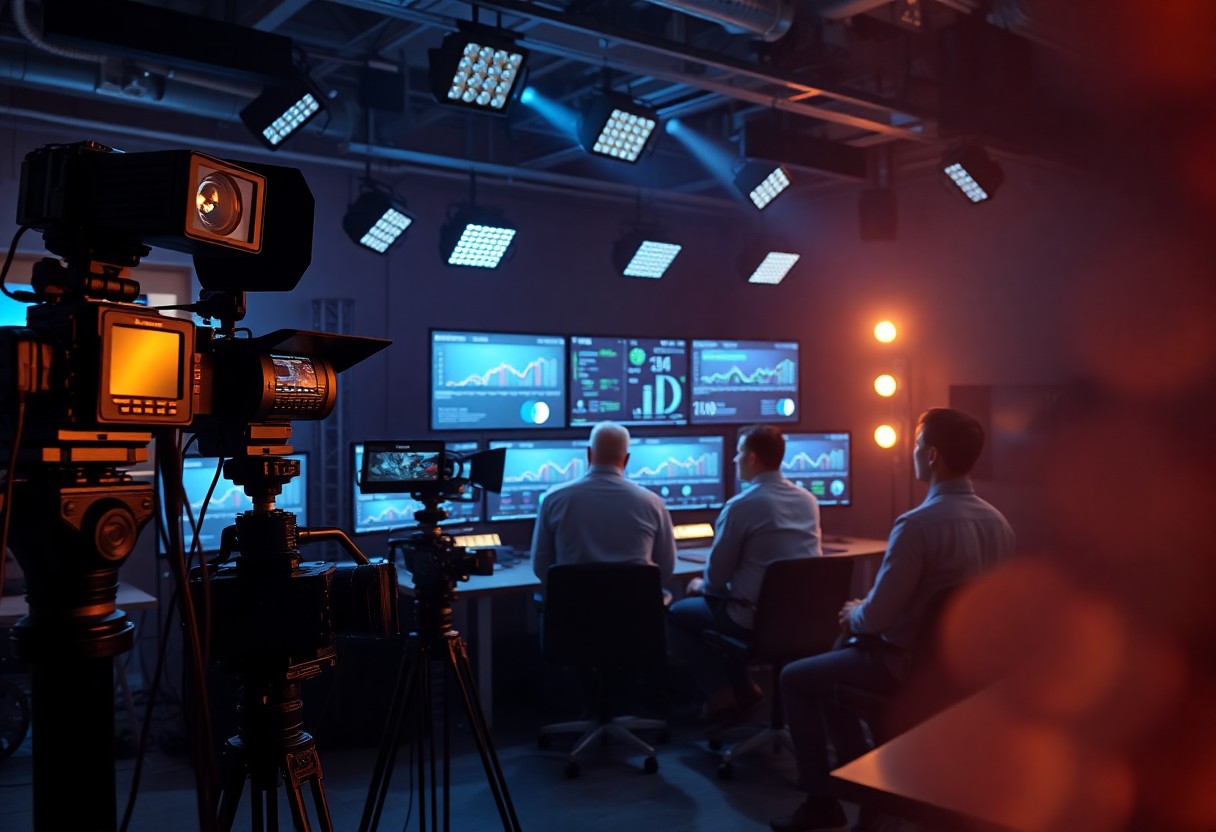With the rapid evolution of technology and shifting audience preferences, you need to stay informed about the trends shaping the future of video production. As detailed in the 2025 Digital Media Trends: Social platforms are becoming …, the landscape of media and entertainment is continuously evolving, influencing how you create, share, and consume video content. In this blog post, we will explore key trends that are redefining production techniques, audience engagement, and overall content strategies, positioning you effectively for the future.
The Evolution of Video Production
The landscape of video production has undergone remarkable transformations, evolving from simple film strips to sophisticated digital platforms. As you research into the intricacies of this industry, it’s crucial to understand how these changes have shaped the way content is created and consumed today.
Historical Overview
By tracing the roots of video production, you can appreciate how far we’ve come—from the early days of analog video in the mid-20th century to the digital revolution that democratized the art of filmmaking. This journey reflects not just technological shifts, but also changing societal norms around media consumption.
Technological Advancements
After the turn of the century, video production witnessed rapid technological advancements that transformed the entire industry. You now have access to high-definition cameras, advanced editing software, and cloud-based collaboration tools, all of which streamline the production process and elevate content quality.
Also, these advancements have made video production more accessible than ever. With user-friendly platforms, even individuals without formal training can create compelling videos. Innovations such as 4K resolution, virtual reality (VR), and augmented reality (AR) have enabled creative storytelling, allowing you to engage your audience in immersive ways. As you explore these tools, you position yourself at the forefront of a continually evolving landscape in media and entertainment.
The Impact of Streaming Services
Any conversation about the future of video production must address streaming services and their transformative effect on media consumption. The rise of platforms like Netflix, Hulu, and Amazon Prime has not only changed how content is distributed but has also influenced viewer preferences and expectations. For an in-depth exploration of this landscape, check out The future of entertainment.
Changing Consumer Behavior
After years of traditional television viewing, you now find that consumer preferences are steadily shifting towards on-demand content. This change is driven by a desire for more control over what and when you watch, leading to a decline in linear television and an increase in binge-watching habits.
Content Delivery and Accessibility
At the forefront of the streaming service revolution is the unprecedented accessibility of content. With just a few clicks, you can access an array of films, series, and documentaries from anywhere in the world, on multiple devices. This shift ensures that you have a plethora of entertainment options at your fingertips, tailored to suit your personal tastes and schedule.
Indeed, the impact of streaming services extends beyond mere content availability; it has redefined how and when you engage with media. Subscription models have made it easier for you to explore a diverse range of genres without the constraint of geographical barriers. Furthermore, the integration of user-friendly interfaces and personalized recommendations enhances your viewing experience, making it more than just passive consumption—it’s an interactive journey tailored to your preferences.
The Role of AI and Automation
If you want to stay ahead in the increasingly competitive media and entertainment landscape, understanding the role of AI and automation in video production is necessary. These technologies not only streamline the production process but also enhance the creative possibilities available to you. By incorporating AI-driven tools, you can reduce human error, optimize workflows, and produce high-quality content more efficiently than ever before.
Enhancing Production Efficiency
Among the most significant advantages of AI in video production is its ability to enhance production efficiency. Automated camera systems, for instance, can reduce setup times and allow for smoother shooting sessions. With AI algorithms handling tasks such as video editing and color correction, you can allocate more time to creative development, ultimately improving overall output quality.
Personalized Content Creation
For those looking to engage their audience more effectively, AI also plays a vital role in personalized content creation. By analyzing viewer preferences and behavior, AI tools enable you to craft tailored video experiences that resonate deeply with your target audience.
Consequently, personalized content not only enhances viewer engagement but also fosters deeper connections with your brand. With AI’s ability to sift through data and identify trends, you can create unique narratives that speak directly to individual viewer preferences. This level of customization empowers you to produce relevant, impactful content, setting you apart in the crowded media landscape.
Virtual and Augmented Reality in Video
Keep an eye on how virtual and augmented reality are revolutionizing video production. These technologies offer captivating experiences that deepen viewer engagement, pushing the boundaries of traditional storytelling. By blending real-world elements with digital content, you can create immersive narratives that resonate more profoundly with your audience, making it a game-changer in the media landscape.
Immersive Storytelling Techniques
Across various platforms, immersive storytelling techniques are transforming the way you engage with content. By utilizing VR and AR, you can craft narratives that allow viewers to interact with the story, making them active participants rather than passive observers. This approach not only enhances emotional connections but also fosters a memorable viewing experience that goes beyond standard watching.
Applications in Entertainment and Marketing
Augmented and virtual reality find vital applications in both entertainment and marketing realms. For filmmakers, the potential to create captivating narratives is vast, allowing for unique experiences like virtual concerts and interactive documentaries. In marketing, immersive ads enable consumers to connect with products in exciting new ways, whether by virtually trying on clothes or experiencing an immersive tour of a destination.
Considering how these applications can elevate your strategy, it’s vital to integrate AR and VR into your marketing and entertainment efforts. They offer innovative tools that allow you to stand out in a crowded market. From interactive promotions that engage users to virtual reality environments that captivate audiences, the potential for increasing brand loyalty and enhancing storytelling is immense. Leveraging these technologies can position your productions at the forefront of industry trends, creating lasting impressions on diverse audiences.
The Importance of Data Analytics
To stay competitive in the ever-evolving landscape of video production, leveraging data analytics is necessary. This approach enables you to gain deeper insights into audience preferences and engagement, helping you tailor your content strategy effectively. By making informed decisions based on comprehensive data analysis, you can streamline your production processes and maximize the impact of your projects in the media and entertainment sector.
Audience Insights and Trends
Around the world of video production, understanding audience insights and trends is vital for creating content that resonates. By harnessing data analytics, you can track viewer behavior, preferences, and trends, allowing you to create tailored content that captivates your target audience. This not only enhances viewer engagement but also drives higher retention rates and increases brand loyalty.
Strategic Decision Making
One key advantage of implementing data analytics in video production is its role in strategic decision-making. By utilizing data to guide your choices, you can identify opportunities, minimize risks, and enhance the overall effectiveness of your content.
Considering the rapid shifts in audience behavior and technology, data-driven strategic decision-making helps you navigate challenges with confidence. Analyzing viewer metrics enables you to adapt your content to meet emerging trends, ensuring that you remain at the forefront of the media landscape. Whether it’s optimizing your distribution channels or refining your storytelling approach, actionable insights derived from data can significantly enhance the performance and relevance of your video productions.
Sustainability in Video Production
Now, sustainability has become a vital focus in video production, urging creators to adopt eco-friendly methods while crafting content. As viewers increasingly prioritize environmental responsibility, incorporating sustainable practices not only enhances your brand’s reputation but also aligns your projects with a growing audience demand for green initiatives.
Eco-friendly Practices
Along with the increasing emphasis on sustainability, you can adopt various eco-friendly practices throughout your production process. From using energy-efficient lighting and minimizing waste to selecting local resources and sustainable materials, these practices contribute to a reduced carbon footprint while showcasing your commitment to environmental stewardship.
The Future of Green Filmmaking
With technology advancing rapidly, the future of green filmmaking is bright, promising more innovative and sustainable solutions. You can look forward to increased integration of renewable energy sources, such as solar and wind power, along with more efficient production techniques that minimize resource consumption. As awareness grows, you’ll find that collaboration with eco-conscious suppliers and vendors can further enhance your project’s sustainability impact.
But as you explore these emerging trends, it’s necessary to remain adaptable and open to new ideas. Pioneering productions are already utilizing virtual sets and digital backgrounds to reduce travel and material waste significantly. By embracing these innovations, you not only contribute to a healthier planet but also stay ahead of an industry that increasingly values sustainability as a core principle.
To wrap up
Taking this into account, understanding the trends shaping the future of video production ensures you stay ahead in the evolving media landscape. By adapting to technological advancements and audience preferences, you can enhance your content strategy and maintain relevancy. Exploring insights like the Six Shifts Changing the Future of Media can provide you with valuable perspectives to navigate these changes effectively. Embrace these trends to elevate your video production in the dynamic world of media and entertainment.




